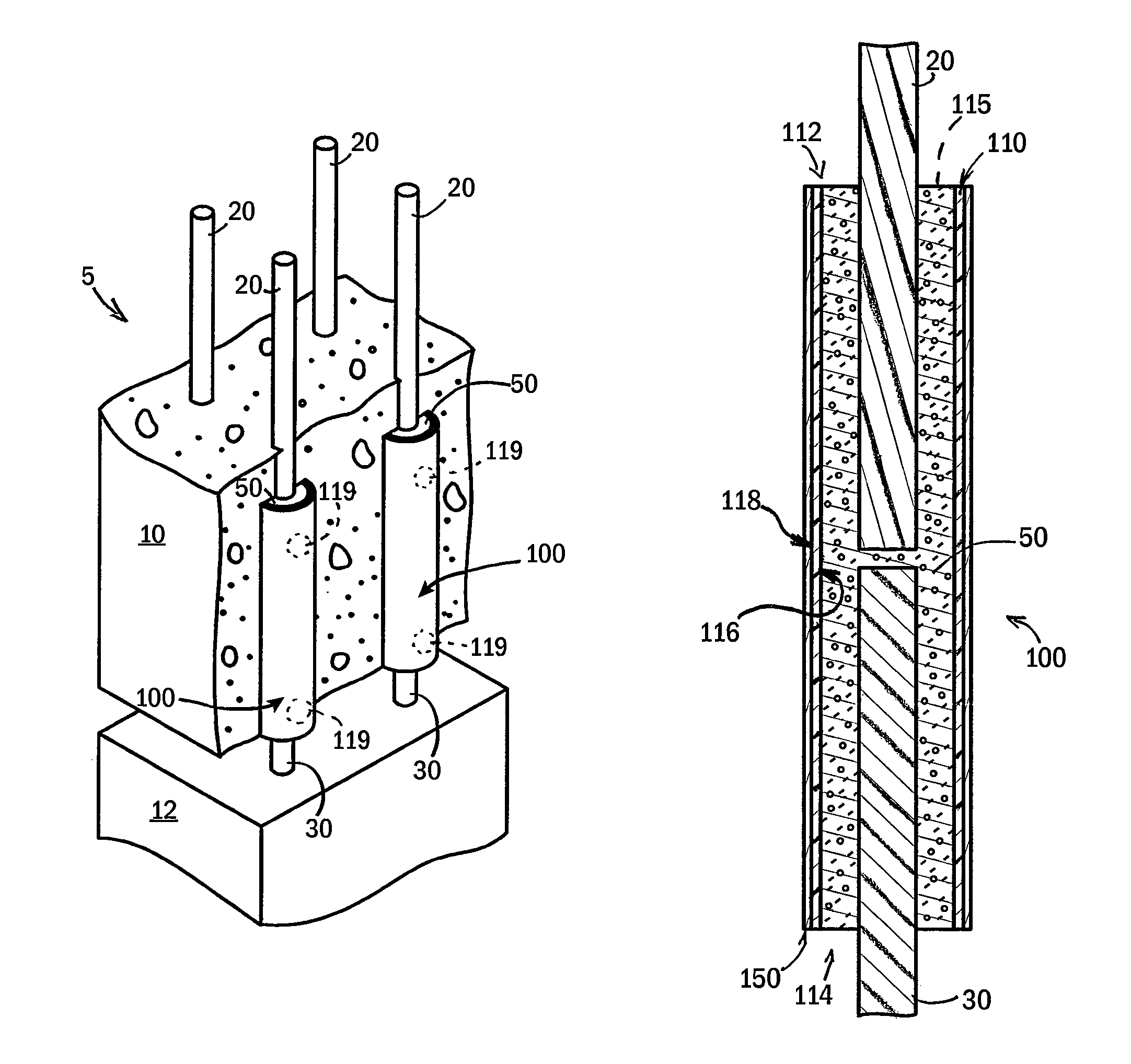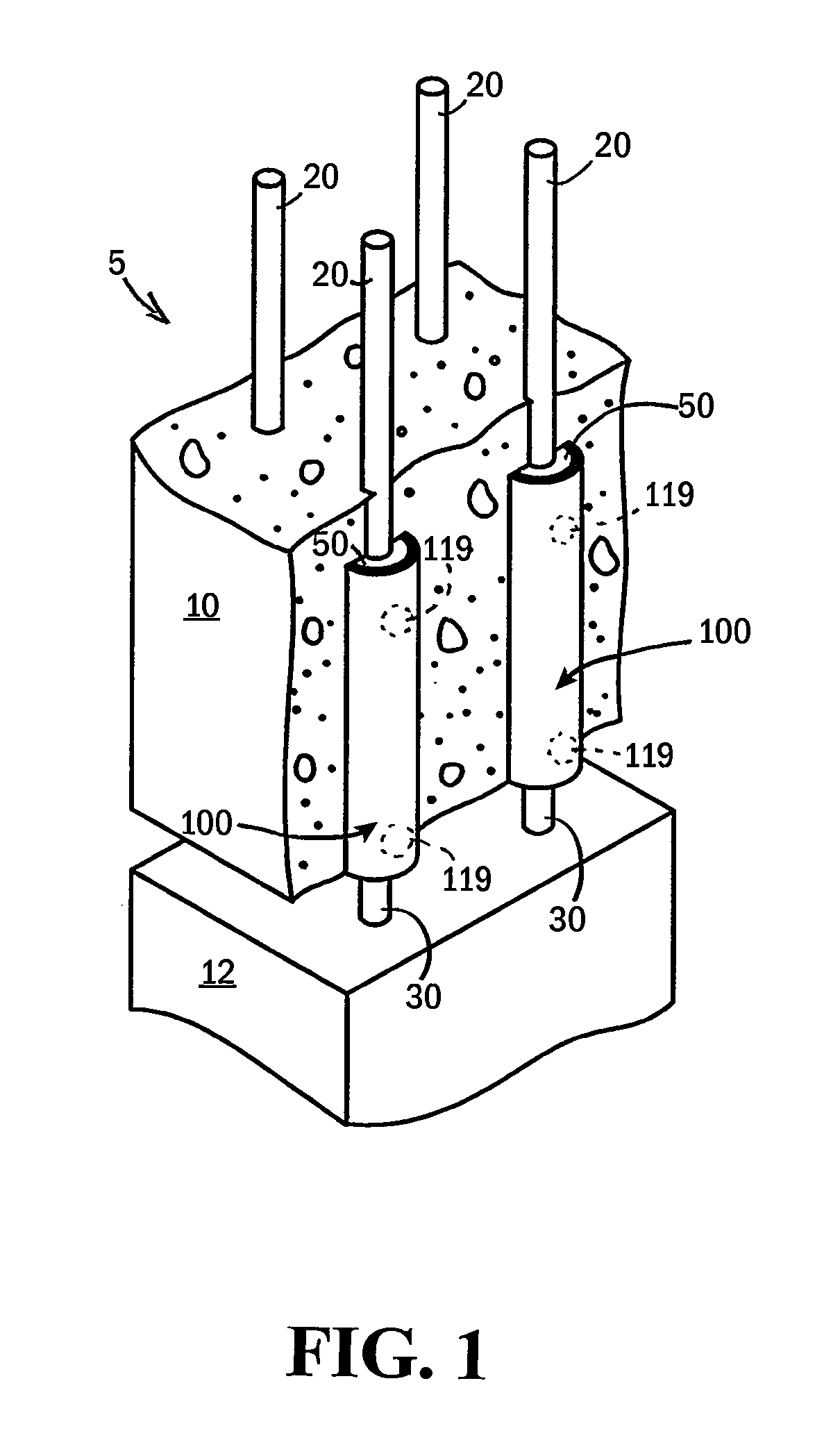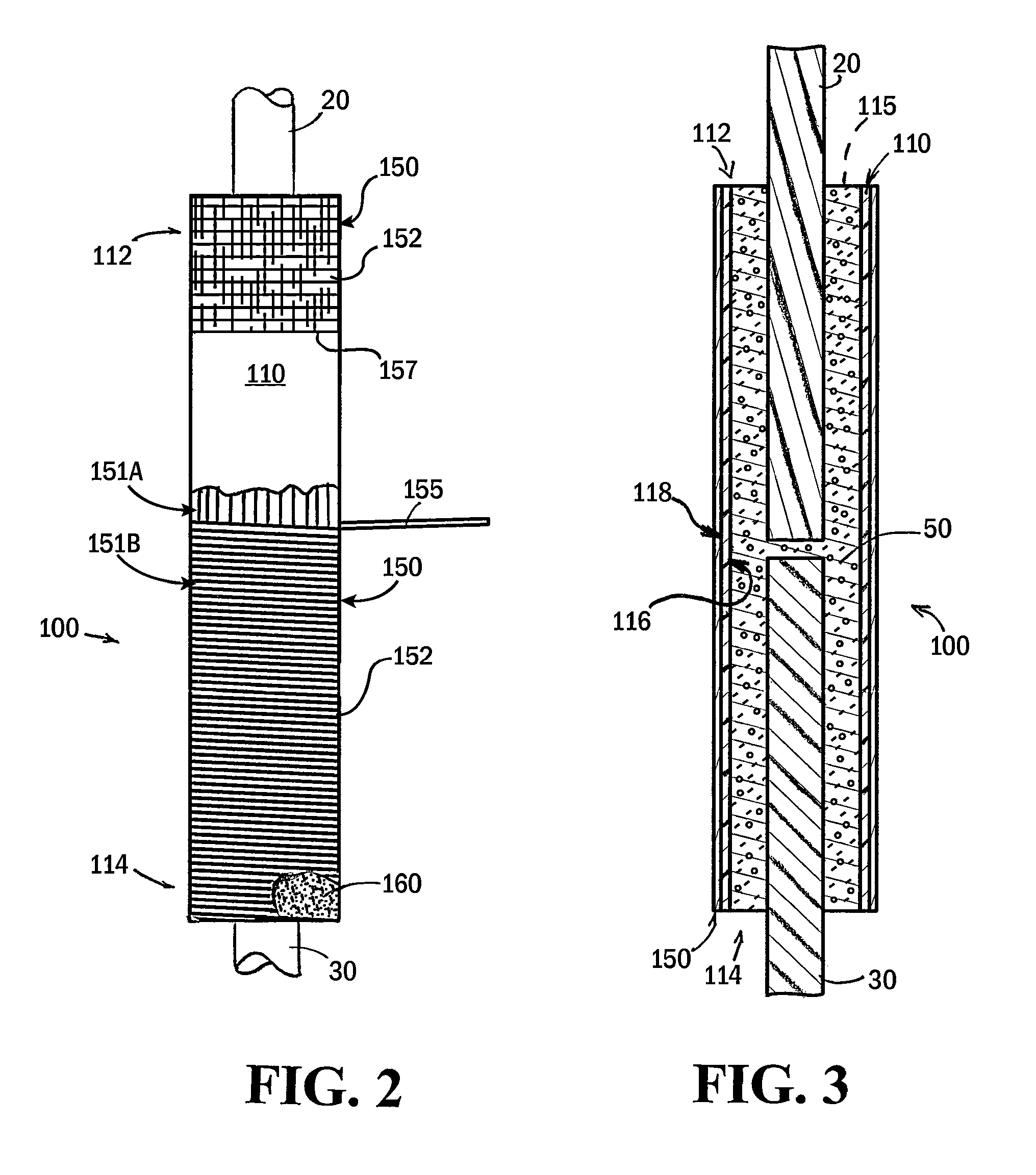Splice system for connecting rebars in concrete assemblies
a technology of splicing system and concrete assembly, which is applied in the direction of couplings, manufacturing tools, mechanical equipment, etc., can solve the problems of deteriorating structure strength, many concrete structures that cannot be connected in a safe and efficient manner, and many concrete structures that cannot be constructed. , to achieve the effect of high corrosive environmen
- Summary
- Abstract
- Description
- Claims
- Application Information
AI Technical Summary
Benefits of technology
Problems solved by technology
Method used
Image
Examples
Embodiment Construction
[0023]Referring now to FIG. 1, the present invention provides a splice system for connecting metallic rebars or fiber-reinforced polymer rebars, e.g., system 5, which facilitates joining multiple precast concrete components together by utilizing at least some non-metallic materials in the various concrete reinforcing components.
[0024]System 5, as illustrated, is used for joining an upper precast concrete component 10 to a corresponding lower precast concrete component 12, both of which were cast, poured, or formed off site. Although upper and lower precast components 10, 12 are shown in a vertical arrangement, it is, of course, appreciated that the system 5 may be implemented for joining concrete components in any suitable arrangement that is dictated by design considerations of an end structure in which such concrete components are part(s).
[0025]Upper and lower precast concrete components 10, 12 include rebars 20, 30 that are cast thereinto. Rebars 20, 30 are made from any of a var...
PUM
 Login to View More
Login to View More Abstract
Description
Claims
Application Information
 Login to View More
Login to View More - R&D
- Intellectual Property
- Life Sciences
- Materials
- Tech Scout
- Unparalleled Data Quality
- Higher Quality Content
- 60% Fewer Hallucinations
Browse by: Latest US Patents, China's latest patents, Technical Efficacy Thesaurus, Application Domain, Technology Topic, Popular Technical Reports.
© 2025 PatSnap. All rights reserved.Legal|Privacy policy|Modern Slavery Act Transparency Statement|Sitemap|About US| Contact US: help@patsnap.com



